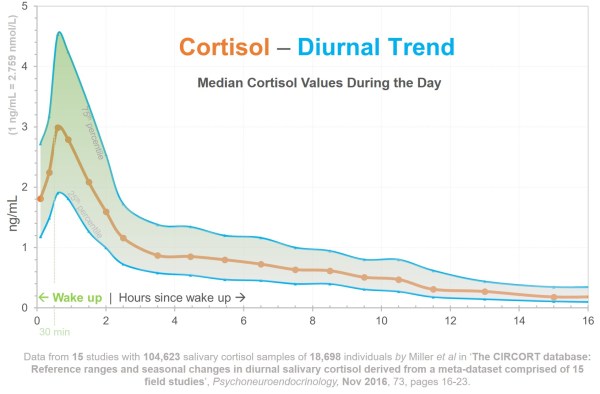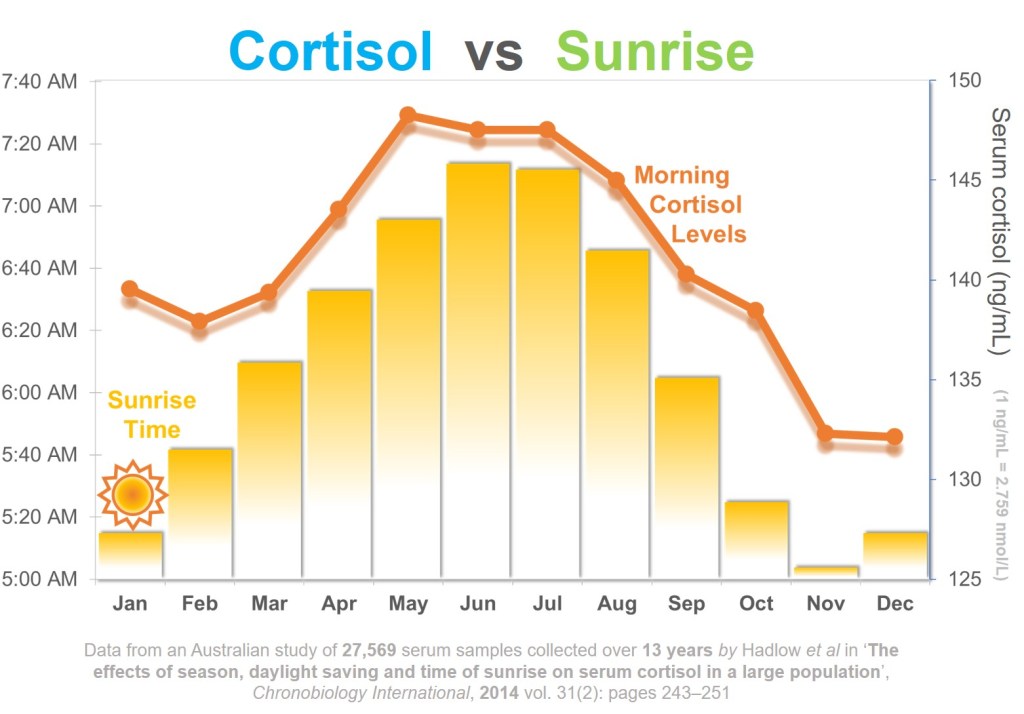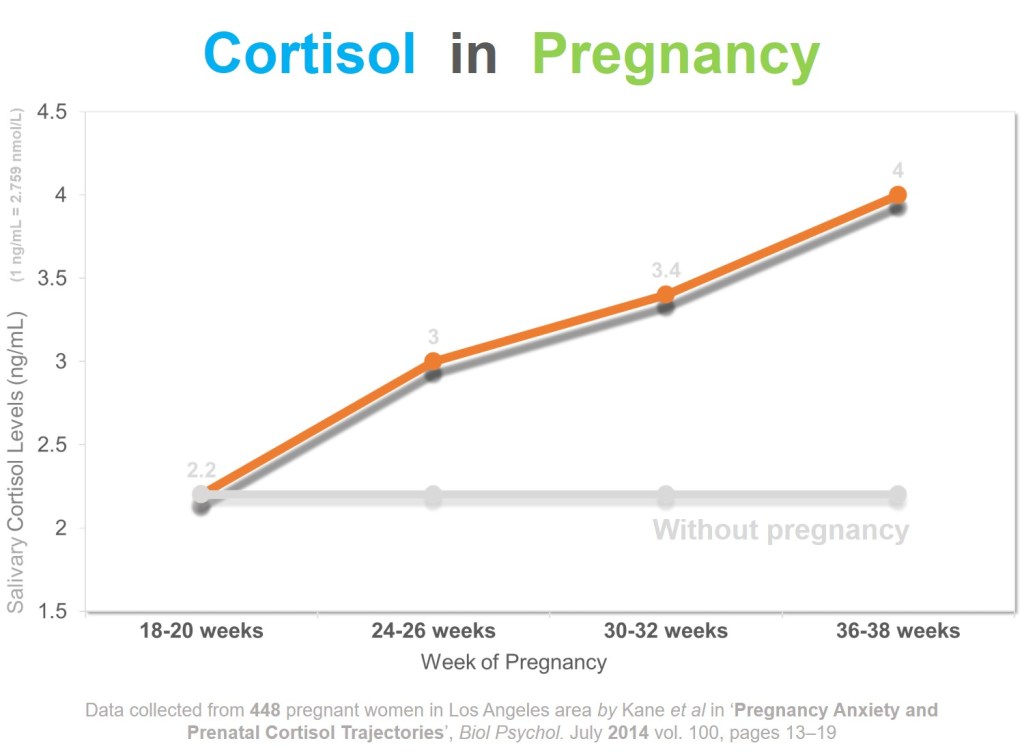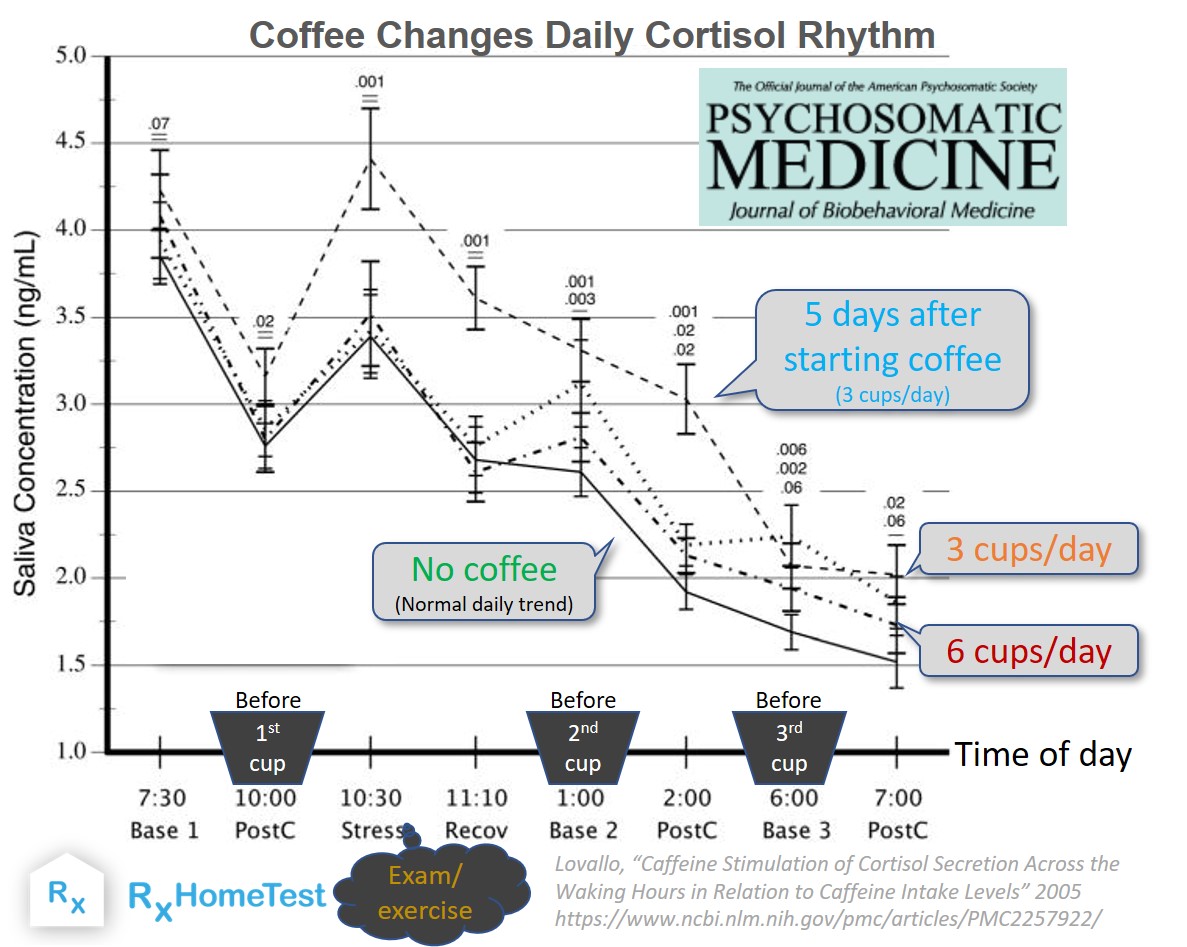
Have you seen people sweating before speaking in public? That’s due to spike in cortisol—one of the stress hormones in our body.
Normally the stress hormone levels peak about 20-30 minutes into the stressful situation, and then slowly decline as the ‘fear’ recedes.
Research has shown that increase in stress depends on many factors. These include type of test performed (e.g., Math exam or an English essay), number of people watching and what their roles are (e.g., teachers, colleagues, friends, or juniors), response of those observing (are they smiling, nodding, jeering, or skeptical), and the stakes involved (e.g., wedding toast or job interview).
Here are few examples of how cortisol rises during such social scenarios.
Cortisol is a hormone necessary for metabolism. It plays a key role in converting carbohydrates into blood sugar, hence often referred as a gluco-corti-coid. It’s important in managing blood pressure and regularly used to treat inflammation and autoimmune diseases.
Since cortisol levels vary with stress, chronic stress can result in persistently high levels that can have severe impact on our health. One common observation is gain in weight during long stressful periods. Because cortisol helps in raising blood glucose and fatty acids from lipids, weight gain is common result of chronic stress. However, despite these negative impacts, cortisol is absolutely critical for healthy appetite, normal sleep routine, healthy emotional and social behaviors.

Role of Chronic Stress – too much stress has real impact.
Testosterone and Aging – research on the male hormone.
Thyroid and Your Health – how thyroid impacts us.
All About Vitamin D – review of symptoms and impact.
CVD and Vitamin D – research on sunlight and heart health.
One of the most important features of stress hormone is the 24-hour circadian rhythm. The diurnal, i.e., the daily trend has a sharp rise within 30-60 minutes of waking up and subsequent slow decline throughout the day. Miller and colleagues looked at 15 different studies of almost 18,000 individuals (Fig. 1) and found the morning levels were more than ten-times higher than evening levels.

Fig. 1: Daily Cortisol levels showing the morning peak and subsequent decline throughout the day (color boundaries are for 25th and 75th percentile). Data from the CIRCORT database.
Adrenal glands, located on top of the kidneys, produce cortisol. The levels are controlled by a feedback loop that includes the hypothalamus, pituitary glad, and adrenal glands (called HPA axis). Details of HPA axis are beyond the scope of this article, however, this page from Michigan State University has a very detailed description.
The Endocrine Society page is an excellent resource for scientific information on adrenal health. In this article, we will specifically focus of factors that influence healthy cortisol levels.
A wide range of factors influence cortisol levels. That’s why it is necessary to understand them before taking a cortisol test. Some of these factors are:
Time of the day: is the most important variable as the levels vary through out the day. They are highest in the morning and drop significantly after the morning peak (see Fig. 1). The levels at noon decline to about a quarter of morning values. They further drop to less than 10% before bedtime. What time you wake up also affects the morning peak: levels drop for those waking up later. And higher the morning peak, sharper the drop during the day.
Age: Infants have much lower levels but sharply increase during puberty. These levels stabilize during adult life but slowly rise as we grow old, especially after the age of fifty. As Fig. 2 shows, mature adults have almost twice the levels in comparison to newborns.

Fig. 2: Cortisol variation with age. After a steep rise during adolescence, the levels flatten before starting to rise around the age of fifty. Data from the CIRCOT database.
Gender: Males tend to have lower cortisol levels in adolescence and adult life. However, this trend flips in the fifties when older men have sharper rise than women (Fig. 2). The daily trends for a 55 years old man and woman, waking up at 7 am, are shown in Fig. 3. For reference, the high and low values are marked at two standard deviation—covering 95% of the distribution (from over 18,000 samples compiled this study).


Fig. 3: Daily cortisol trend for a 55 year old woman and men, with a waking up time of 7 am. By this age, men have higher levels than women. Data from CIRCOT database.
Time of year: Cortisol has a strong seasonal association, especially in regions farther away from equator. Many of these places observe day light saving times. Why should you care about day light saving time? Because each hour of late sunrise results in almost 5% rise in morning cortisol in an Australian study of around 27,000 samples that were collected over 13 years. Therefore, age and season are the two most important modulators besides the time of day.

Fig. 4: Cortisol vs sunrise. Morning cortisol levels are strongly correlated to the time of sunrise with almost 5% change per hour. Data from an Australian study of over 27,000 samples collected over 13 years by Hadlow et al. (2014).
Health conditions: Some studies suggest diurnal, i.e., the daily trend is a good indicator of health and the slope a predictor of future health. Serious conditions, e.g., cancers, cardiovascular diseases , and others can dramatically flatten the daily trend.
Marital Status: A study of 572 men and women by University of Pittsburgh found that marriage acts as a buffer against the effects of daily stress. It also helps lower the stress hormone levels and a faster drop in the diurnal trend. Women considering themselves happily married showed a much higher morning cortisol and faster drop—a trend considered healthy.
Pregnancy: Stress hormone levels start rising after the 20th week of pregnancy, and stay high until the first week after delivery. The average values rise by 1.5 to 2-times the normal levels, with most of this elevation observed in the morning. Instead of peaking at 30-45 minutes after waking up, the peak of the diurnal trend delays by almost 90 minutes. However, the daily circadian rhythm remains. An excellent overview by Gwen Dewar explains the role of cortisol during pregnancy.

Fig. 5: Cortisol during pregnancy. Levels start rising around week 20 of pregnancy, doubling around the time of delivery before dropping after a week. Data for 448 pregnant women by Kane et al. (2014)
Coffee: Caffeine is well known to give a boost in energy, but at the expense of a crash after a few hours. It shifts the daily cortisol curve up for first few days of starting caffeine as shown in Fig. 6 below. The diurnal trend returns towards normal over time, even at above average consumption, which is around 300 mg/day or 3 cups in US. However, afternoon cortisol levels remain higher than normal, which may have long term health effects, especially for heart health.

Fig. 6: Cortisol levels shift up for those starting just starting to drink coffee. They return back to baseline but evening and night levels stay above normal and might have health implications. Data from Lovallo et. al. (2005).
Cortisol is critical for our health but can result in increased weight during periods of chronic stress. An important characteristic of this stress hormone is the diurnal trend with a peak that is ten-times higher in the morning. Because several factors affect the levels, one should be carefully consider them before taking a test. A 4-point salivary cortisol test can capture the diurnal trend and some studies have suggested the slope to be a predictor of future health.
The CIRCORT database: Reference ranges and seasonal changes in diurnal salivary cortisol derived from a meta-dataset comprised of 15 field studies by Miller et al, in Psychoneuroendocrinology, Nov 2016, 73, pages 16-23.
The effects of season, daylight saving and time of sunrise on serum cortisol in a large population by Hadlow et al in Chronobiology International, 2014, vol 31(2), pages 243–251.
Diurnal Cortisol Slopes and Mental and Physical Health Outcomes: A Systematic Review and Meta-analysis by Adam et al in Psychoneuroendocrinology, Sep 2017, vol 83, pages 25-41.
Marital status as a predictor of diurnal salivary cortisol levels and slopes in a community sample of healthy adults by Chin et al, in Psychoneuroendocrinology, Apr 2017, vol 78, pages 68-75.
Marital Satisfaction, Recovery From Work, and Diurnal Cortisol Among Men and Women by Saxbe et al, in Health Psychology, 2008, vol 27 (1), pages 15-25.
Pregnancy Anxiety and Prenatal Cortisol Trajectories by Kane et al, in Biological Psychology Jul 2014, vol 100, pages 13–19.